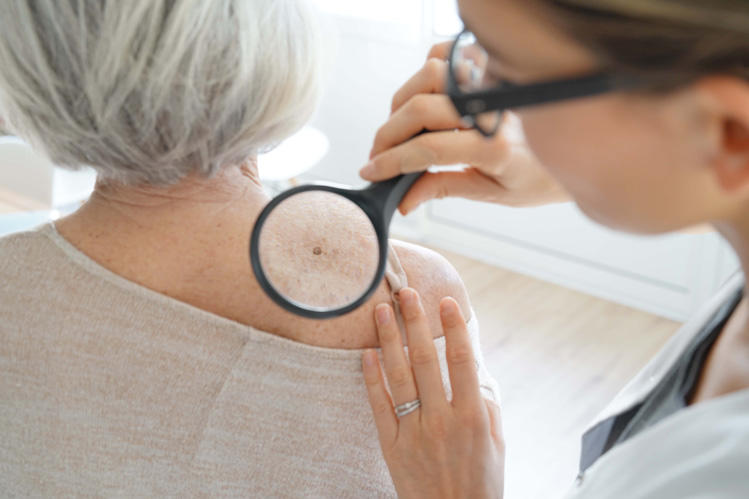Consult with mohs surgery to remove skin cancer with minimal scarring.
Consult with mohs surgery to remove skin cancer with minimal scarring.
Blog Article
Navigating Skin Cancer Cells Therapy: The Essential Duty of Mohs in Modern Dermatology Practices
Skin cancer, a challenging diagnosis, typically leaves patients coming to grips with many treatment options. Amongst these, Mohs surgery stands as a sign in contemporary dermatology, renowned for its precise strategy to cancer elimination and conservation of surrounding healthy and balanced tissue. This cutting-edge practice assures not only premium cosmetic results but likewise offers instant results, reducing client anxiousness. As we check out the details of this procedure, one will certainly appreciate its crucial role in skin cancer treatment.
Understanding Skin Cancer: Kinds and Threats
There are three primary kinds of skin cancer cells: Basal cell carcinoma, Squamous cell carcinoma, and Melanoma. It accounts for just concerning 1% of skin cancer cells cases but creates the substantial bulk of skin cancer deaths. Risk variables consist of fair skin, background of sunburn, extreme sunlight direct exposure, living at high elevations or shut to the equator, having numerous moles, a household history of skin cancer cells, and deteriorated immune system.
What Is Mohs Surgical procedure and Just How It's Reinventing Skin Cancer Treatment
In spite of the various therapies currently readily available for skin cancer, Mohs surgical procedure stands apart as a groundbreaking and very efficient solution. Named after Frederic E. Mohs, the medical professional who created the procedure, Mohs surgical procedure is an accurate medical technique utilized to deal with skin cancer. Throughout the treatment, thin layers of cancer-containing skin are considerably gotten rid of and checked out until only cancer-free cells remains. This technique permits the cosmetic surgeon to validate that all cancer cells have been gotten rid of at the time of surgical procedure. This degree of precision, combined with the capacity to spare as much healthy cells as feasible, is revolutionizing skin cancer therapy. As an outcome, Mohs surgery has ended up being a keystone of modern dermatology practices.
The Benefits of Mohs Surgical Treatment Over Conventional Skin Cancer Therapies
Structure on the ingenious nature of Mohs surgery, it's vital to consider its various benefits over traditional skin cancer cells therapies. Unlike standard operating procedures, Mohs provides a higher cure price, typically reaching 99% for new therapies and 94% for persistent cancers. This precision is due to its one-of-a-kind strategy of gradually eliminating and analyzing tissue layers till only cancer-free cells remain (hair loss). In addition, it decreases damage to healthy skin, bring about less scarring and improved aesthetic results. Mohs also gives instant results, getting rid learn the facts here now of the anxiety-ridden wait usual with other approaches. Last but not least, it's affordable, as the surgery and tiny evaluation take place concurrently, removing the requirement for additional research laboratory services. Thus, Mohs stands for a significant innovation in dermatological techniques.
The Procedure of Mohs Surgical Treatment: What to Expect During the Process

Potential Side Effects and Post-Operative Treatment of Mohs Surgical Treatment
Going through Mohs surgical treatment, like any type of various other procedure, involves possible negative effects that people ought to recognize. Common negative effects include discomfort, wounding, and swelling at the surgical procedure site. Nevertheless, these are normally momentary and convenient with over the counter discomfort medicine and ice packs. In uncommon cases, clients might experience infection, blood straight from the source loss, or an allergy to the local anesthetic. Post-operative care is important to recovery and minimizing side impacts. This normally entails maintaining the injury tidy and completely dry, taking prescribed medications, and avoiding laborious tasks. People need to also attend all follow-up appointments for wound treatment and monitoring. Sometimes, extra treatments may be required to guarantee total removal of the cancerous cells. Complying with these post-operative treatment guidelines can greatly enhance recovery and end results.
Verdict

Report this page